The CD4 transmembrane GGXXG and juxtamembrane (C/F)CV+C motifs mediate pMHCII-specific signaling independently of CD4-LCK interactions
- PMID: 38639990
- PMCID: PMC11031086
- DOI: 10.7554/eLife.88225
The CD4 transmembrane GGXXG and juxtamembrane (C/F)CV+C motifs mediate pMHCII-specific signaling independently of CD4-LCK interactions
Abstract
CD4+ T cell activation is driven by five-module receptor complexes. The T cell receptor (TCR) is the receptor module that binds composite surfaces of peptide antigens embedded within MHCII molecules (pMHCII). It associates with three signaling modules (CD3γε, CD3δε, and CD3ζζ) to form TCR-CD3 complexes. CD4 is the coreceptor module. It reciprocally associates with TCR-CD3-pMHCII assemblies on the outside of a CD4+ T cells and with the Src kinase, LCK, on the inside. Previously, we reported that the CD4 transmembrane GGXXG and cytoplasmic juxtamembrane (C/F)CV+C motifs found in eutherian (placental mammal) CD4 have constituent residues that evolved under purifying selection (Lee et al., 2022). Expressing mutants of these motifs together in T cell hybridomas increased CD4-LCK association but reduced CD3ζ, ZAP70, and PLCγ1 phosphorylation levels, as well as IL-2 production, in response to agonist pMHCII. Because these mutants preferentially localized CD4-LCK pairs to non-raft membrane fractions, one explanation for our results was that they impaired proximal signaling by sequestering LCK away from TCR-CD3. An alternative hypothesis is that the mutations directly impacted signaling because the motifs normally play an LCK-independent role in signaling. The goal of this study was to discriminate between these possibilities. Using T cell hybridomas, our results indicate that: intracellular CD4-LCK interactions are not necessary for pMHCII-specific signal initiation; the GGXXG and (C/F)CV+C motifs are key determinants of CD4-mediated pMHCII-specific signal amplification; the GGXXG and (C/F)CV+C motifs exert their functions independently of direct CD4-LCK association. These data provide a mechanistic explanation for why residues within these motifs are under purifying selection in jawed vertebrates. The results are also important to consider for biomimetic engineering of synthetic receptors.
Keywords: CD4; Lck; T cell; TCR-CD3; evolution; evolutionary biology; immunology; inflammation; mouse; pMHCII.
© 2023, Lee et al.
Conflict of interest statement
ML, PT, CK, PY, KL, HP, KV No competing interests declared, MK Has disclosed an outside interest in Module Therapeutics to the University of Arizona. Conflicts of interest resulting from this interest are being managed by the University of Arizona in accordance with their policies
Figures

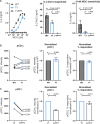



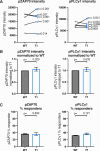




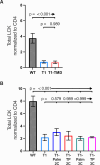

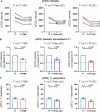
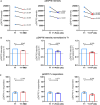
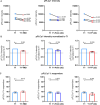
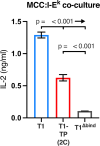
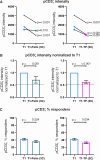
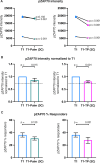

Update of
-
The CD4 transmembrane GGXXG and juxtamembrane (C/F)CV+C motifs mediate pMHCII-specific signaling independently of CD4-LCK interactions.bioRxiv [Preprint]. 2023 Nov 29:2023.05.05.539613. doi: 10.1101/2023.05.05.539613. bioRxiv. 2023. Update in: Elife. 2024 Apr 19;12:RP88225. doi: 10.7554/eLife.88225. PMID: 37214965 Free PMC article. Updated. Preprint.
Similar articles
-
The CD4 transmembrane GGXXG and juxtamembrane (C/F)CV+C motifs mediate pMHCII-specific signaling independently of CD4-LCK interactions.bioRxiv [Preprint]. 2023 Nov 29:2023.05.05.539613. doi: 10.1101/2023.05.05.539613. bioRxiv. 2023. Update in: Elife. 2024 Apr 19;12:RP88225. doi: 10.7554/eLife.88225. PMID: 37214965 Free PMC article. Updated. Preprint.
-
Enhancing and inhibitory motifs regulate CD4 activity.Elife. 2022 Jul 21;11:e79508. doi: 10.7554/eLife.79508. Elife. 2022. PMID: 35861317 Free PMC article.
-
Reciprocal TCR-CD3 and CD4 Engagement of a Nucleating pMHCII Stabilizes a Functional Receptor Macrocomplex.Cell Rep. 2018 Jan 30;22(5):1263-1275. doi: 10.1016/j.celrep.2017.12.104. Cell Rep. 2018. PMID: 29386113 Free PMC article.
-
CD4 and signal transduction.Curr Top Microbiol Immunol. 1996;205:47-62. doi: 10.1007/978-3-642-79798-9_3. Curr Top Microbiol Immunol. 1996. PMID: 8575197 Review.
-
The role of competing mechanisms on Lck regulation.Immunol Res. 2020 Oct;68(5):289-295. doi: 10.1007/s12026-020-09148-2. Epub 2020 Aug 14. Immunol Res. 2020. PMID: 32794043 Review.
References
-
- Bosselut R, Zhang W, Ashe JM, Kopacz JL, Samelson LE, Singer A. Association of the adaptor molecule LAT with CD4 and CD8 coreceptors identifies a new coreceptor function in T cell receptor signal transduction. The Journal of Experimental Medicine. 1999;190:1517–1526. doi: 10.1084/jem.190.10.1517. - DOI - PMC - PubMed
MeSH terms
Substances
Associated data
Grants and funding
LinkOut - more resources
Full Text Sources
Other Literature Sources
Research Materials
Miscellaneous

